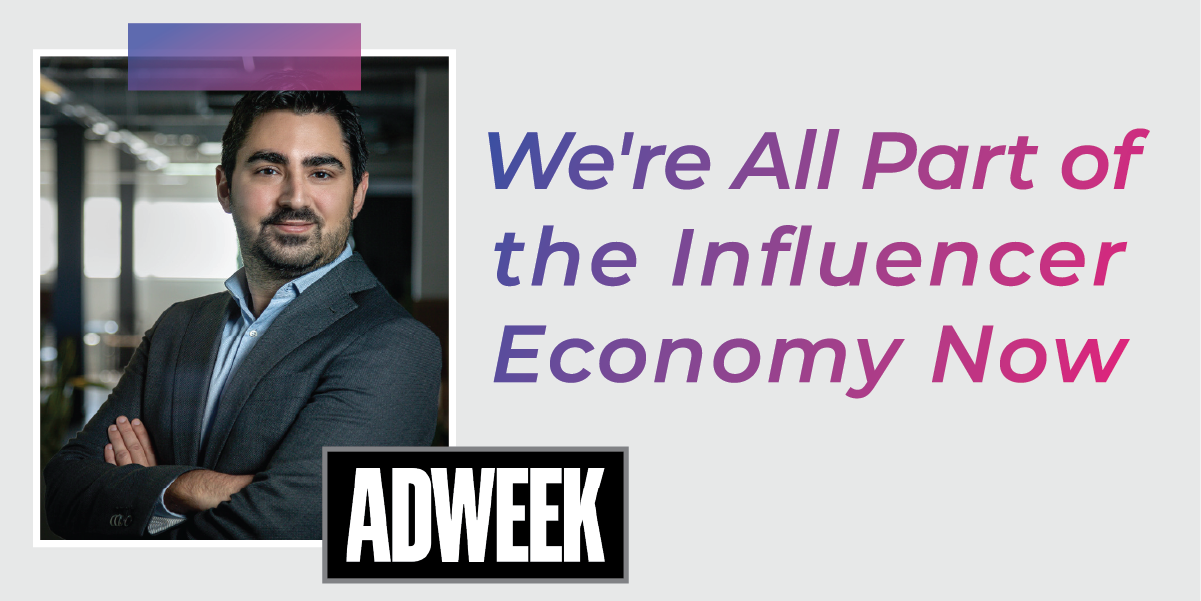Original Article: AdWeek
The outbreak of the pandemic in 2020 rippled across the globe as all communal spaces were shuttered in response to the worldwide public health crisis. Everything from school and work to doctor visits and spin classes went virtual. The steady but gradual ecommerce growth gave way to a 10-year acceleration in just three months, changing the retail landscape forever.
As talk turns toward speculating about the post-pandemic world, for many, the stay-at-home lifestyle is the new normal. Mounting concerns about the highly contagious delta variant and other emerging strains suggest there won’t be a “snap back” to pre-pandemic consumer behavior anytime soon.
In this changed landscape, marketing means taking a lesson from the direct-to-consumer playbook and working with creators to reach consumers in a borderless world. All of this heightens the power of creators at a time when the customer journey is less linear and more integrated into the online experience.
What we can learn from DTC brands
Since direct-to-consumer brands are digital natives, they were well positioned for pandemic disruption. In fact, for many it was an opportunity to leverage their digital savvy as a competitive advantage.
None of these ideas and practices develop in a vacuum. As DTC brands find success, they bring to market a playbook for how they do business. This playbook includes how they work with influencers.
Many DTC brands like Fashion Nova and Revolve Clothing built their businesses on influencer outreach. Unlike legacy brands, when these digital natives work with creators, they tend to impose less creative control but are much more conversion-focused.
The 2020 acceleration in ecommerce didn’t just push up demand; it kickstarted a rapid maturation of digital commerce. With the seismic shift in the online retail landscape, even social media platforms worked quickly to provide conversion tools and facilitate a more seamless social shopping experience.
DTC brands weren’t the only ones to benefit from these new ecommerce tools, though they’ve done a lot of legwork to validate the ROI of social shopping and the power of creative influencers.
Influence in the era of social commerce
Creative influencers are arguably more native to social media than the DTC brands they help build, and ultimately the reason they’re so effective is because social is all about people talking to people.
By the same token, the success of social platforms is deeply tied to their ability to help businesses generate revenue. As social is integrated into every stage of the customer journey, both social and ecommerce platforms are trying to own more of the journey from discovery to purchase. However, the customer journey isn’t linear anymore. For example, a person might discover a product on YouTube, read something on Twitter about it later and make their final purchase through Instagram.
And this is where creators are truly the linchpin of social commerce. Previously, social platforms were so focused on capturing ad dollars that they treated influencers like competition. Now, platforms are trying to enable influencers to drive sales directly.
Indeed, platforms are starting to understand that it’s the creators who bring trust and validation into the social space, and that’s what helps brands generate more revenue.
3 influencer marketing tips for any business
Take a global perspective. The line between the physical and digital worlds is practically nonexistent. And with Covid-19 shifting so much of the customer experience online, it’s important to understand the core value proposition of your business and how it translates to different markets. Get to know the cultures of the various regions you’re considering and come up with a localized strategy.
Think digital-first. The old playbook doesn’t work anymore—you need to understand what your customers’ journey looks like now. Where do they shop, and where are they buying your product? If you understand their journey, you can reach them with the right message at the right time, no matter what platform they’re on.
Get to know the local culture. The most successful brands have a local team that understands the market and can influence the decision-making process. One of the challenges in smaller markets is that sometimes a celebrity influencer might look like a mid-tail influencer purely based on the numbers. Understanding these nuances as you enter new markets can ensure you find the most relevant creators to work with.






